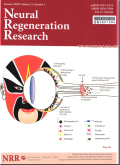摘要Spinal cord organoids are three-dimensional tissues derived from stem cells that recapitulate the primary morphological and functional characteristics of the spinal cord in vivo.As emerging bioengineering methods have led to the optimization of cell culture protocols,spinal cord organoids technology has made remarkable advancements in the past decade.Our literature search found that current spinal cord organoids do not only dynamically simulate neural tube formation but also exhibit diverse cytoarchitecture along the dorsal-ventral and rostral-caudal axes.Moreover,fused organoids that integrate motor neurons and other regionally specific organoids exhibit intricate neural circuits that allows for functional assessment.These qualities make spinal cord organoids valuable tools for disease modeling,drug screening,and tissue regeneration.By utilizing this emergent technology,researchers have made significant progress in investigating the pathogenesis and potential therapeutic targets of spinal cord diseases.However,at present,spinal cord organoid technology remains in its infancy and has not been widely applied in translational medicine.Establishment of the next generation of spinal cord organoids will depend on good manufacturing practice standards and needs to focus on diverse cell phenotypes and electrophysiological functionality evaluation.
更多相关知识
- 浏览7
- 被引0
- 下载0


相似文献
- 中文期刊
- 外文期刊
- 学位论文
- 会议论文



 换一批
换一批 换一批
换一批



